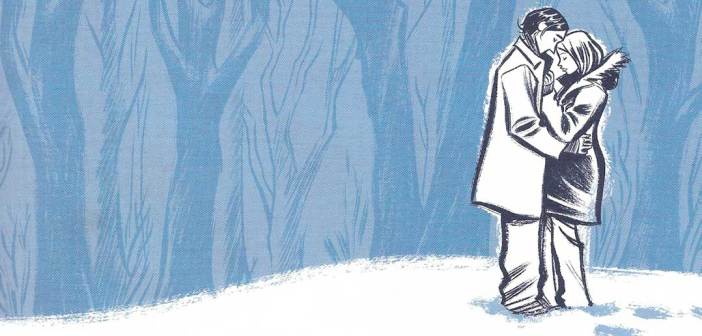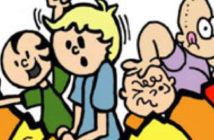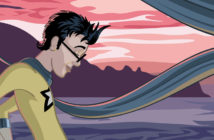Craig Thompson’s graphic novel Blankets was removed from the bookshelves of Missouri’s Marshall Public Library on October 04, 2006 due to accusations of the book containing pornography. Whatever silly moral crusade the residents of Marshall thought they were fulfilling, all they accomplished was censoring a moving story crafted with artistic grace and intellectual integrity. The censorship, and not the book itself, was the greatest crime of all.
Both written and illustrated by Thompson, Blankets relays the creator’s personal story of growing up in Marathon, Wisconsin, where he and his younger brother were raised by his parents, both conservative evangelical Christians. Thompson was tall, lanky, and cowardly; he illustrates himself meandering through school, year after year, struggling to keep up grades and only finding solace in his artwork. As he enters his teenage years, Thompson attends a Christian winter retreat where he meets his first love, Raina. The two initially strike up a close friendship, and keep in close touch through letters and phone calls after the retreat ends. His separation from Raina eventually leaves Thompson lovesick, so he makes a deal with his parents to allow him a two-week visit with Raina and her family in Michigan. Filled with endearing memories and anxious melancholy, the story of Thompson and Raina’s shared time together is an experience of human growth that develops the couple into two individual adults, carrying them away from their childhood roots.
Blankets has already been hailed a masterpiece by several writers, artists, and news sources; the graphic novel further earned a boastful list of awards, such as the 2004 Eisner Award for Best Writer/Artist and Best Graphic Album, as well as the 2004 Harvey Award for Best Artist, Best Graphic Album of Original Work, and Best Cartoonist. None the less, I cannot help myself in adding my own annotations of praise. Craig Thompson accomplished something in his book (which he calls an “illustrated novel”) that is rare in American culture and art. His story is told with intellectual honestly and integrity that is more than refreshing—it’s breathtaking. A strong theme in the memoir relays Thompson’s cerebral and moral growth as a person, ultimately rejecting his fundamentalist Christian upbringing and living his life for himself.
Thompson’s pure ability as both a literary and visual storyteller is something to behold and admire, making him a top-tier talent in alternative comics, ranking alongside creators like Joe Sacco and Chris Ware. His writing is clear and illuminating, while his illustrations will carry any reader from page to page like a feather floating along a breeze. Some pages have carefully constructed panels, while others are large imaginative swathes of beauty, showing Thompson’s depth and talent in its truest of manifestations.
The accusations that arose in Missouri two and a half years ago concerning Blankets being pornography were plainly disgusting. While there are a few limited and vague images of genitalia in the book, the content in question was treated as if it was a precursor to Alan Moore and Melinda Gebbie’s Lost Girls (which was a beautiful book itself because of its pornographic imagery). The controversy surrounding the book lasted until March 14, 2007, when a committee thankfully ruled that the novel had to be returned to the library’s shelves.
Though the graphic novel was first released in 2003 by Top Shelf, Blankets will have an enduring legacy for countless years to come. It single-handedly demonstrates the capability of the comic book medium to be a viable, important, and respectable source of both literature and art. Breaking down the stifling reputation of the superhero genre, Blankets is the perfect book for anyone who wants to see what comics truly offer.
This comic book review originally appeared on Comic News on 05 March 2009.




